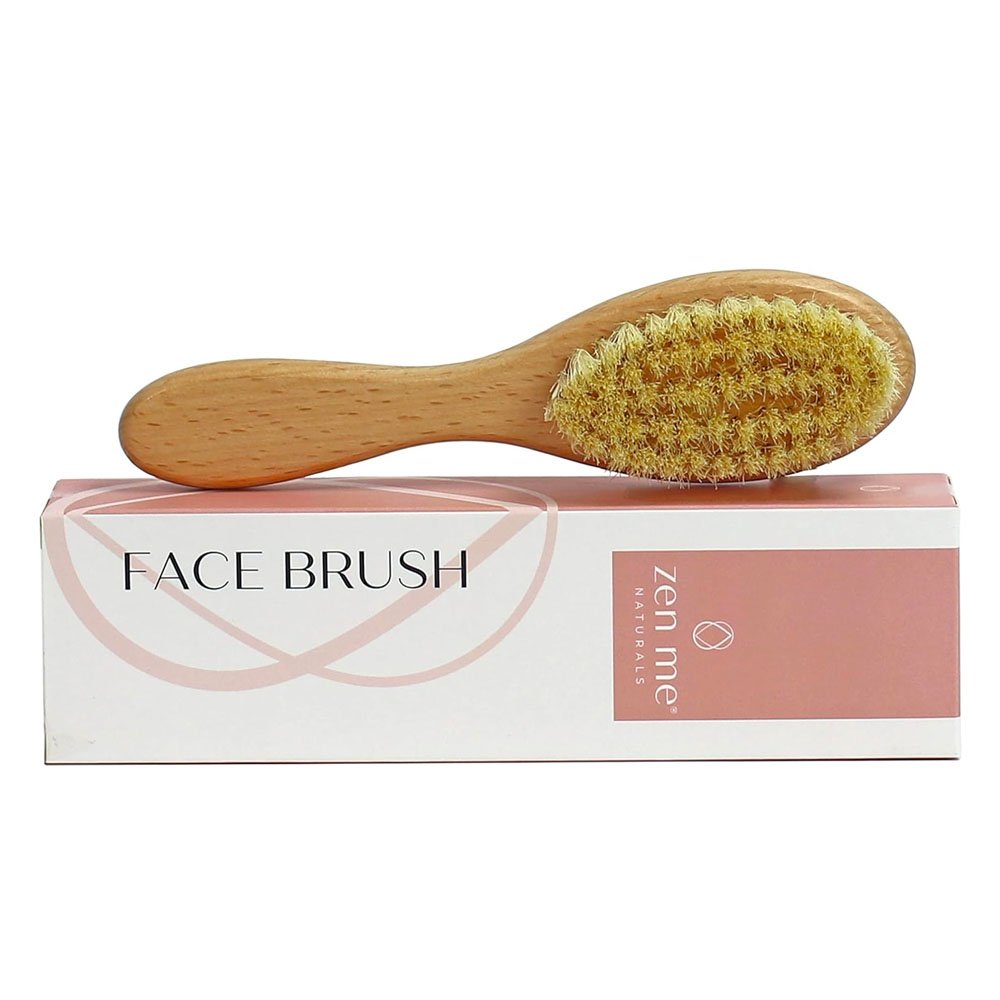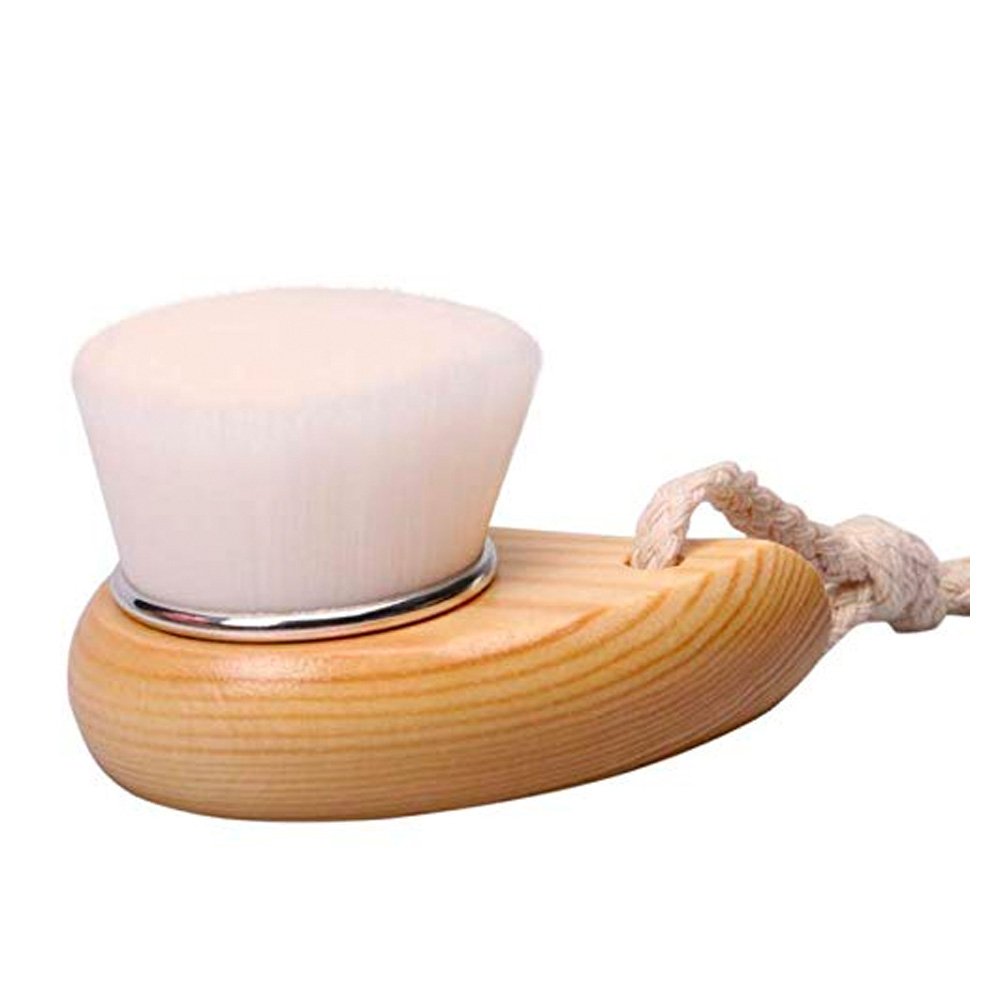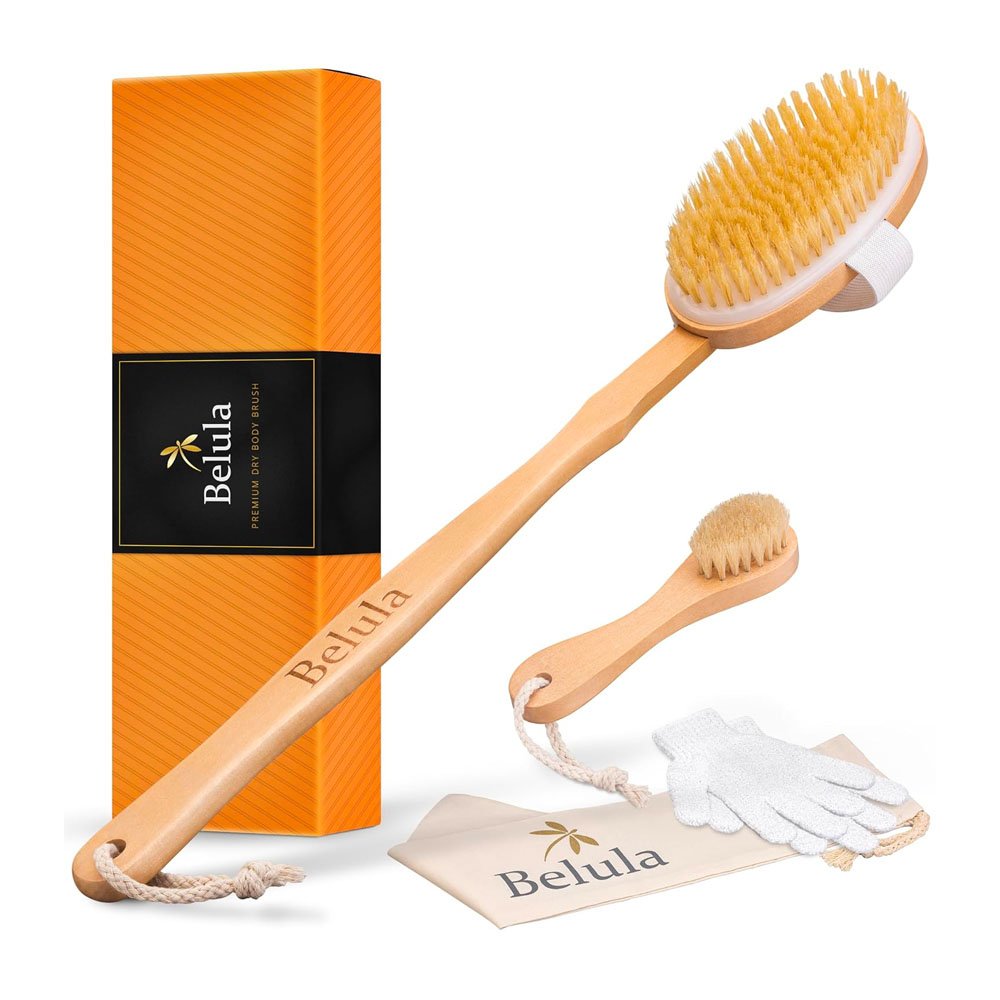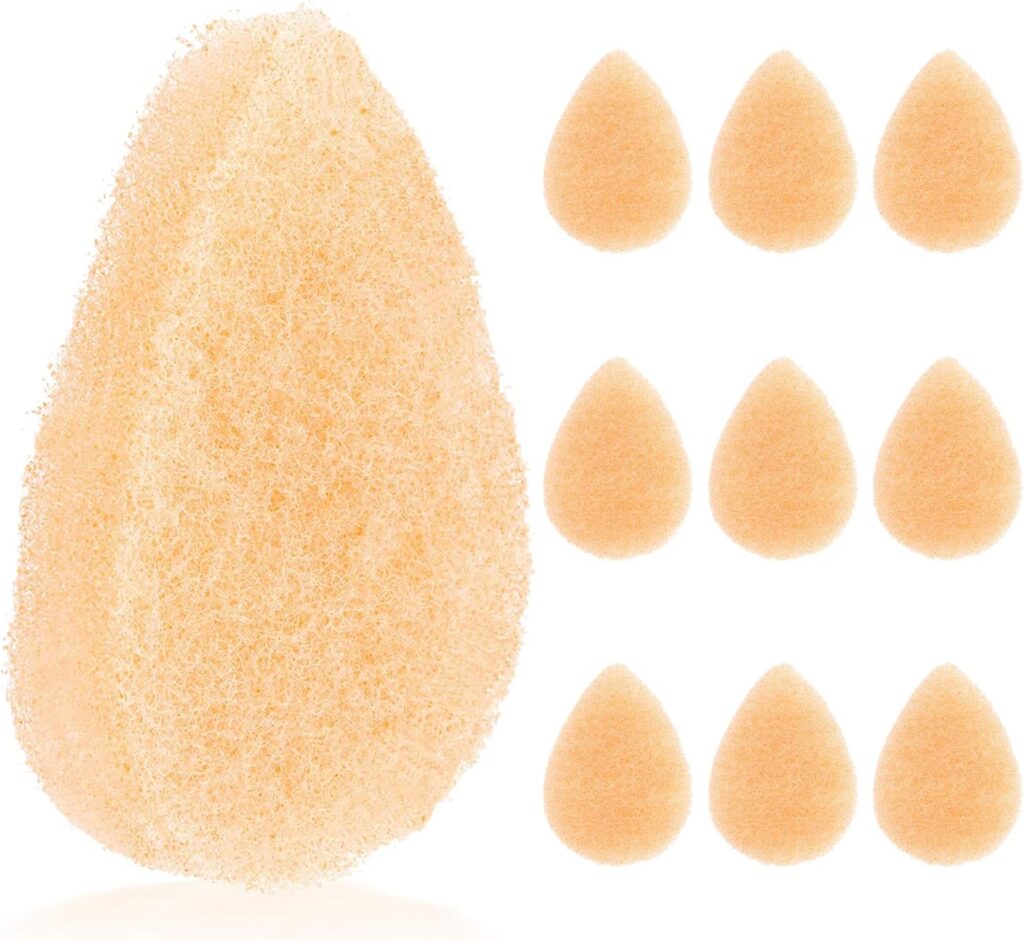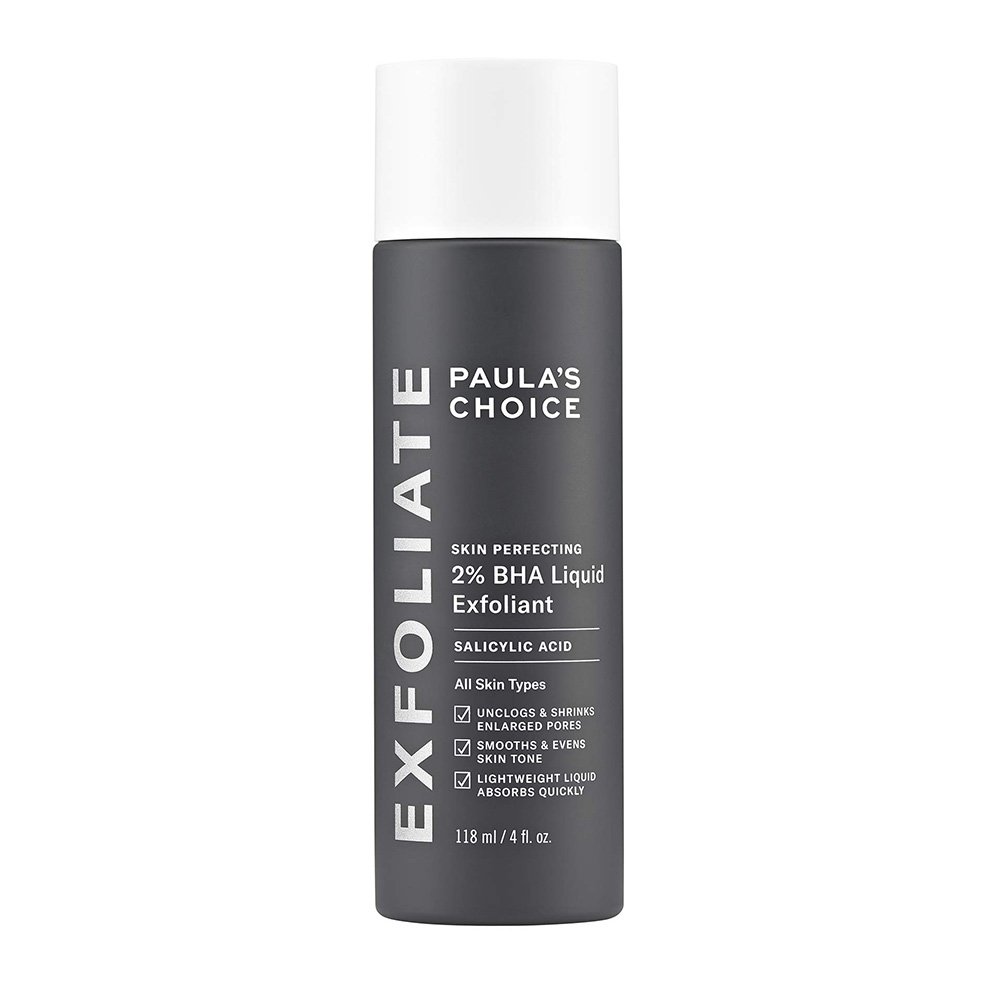All About Facial Dry Brushing
Here’s everything you need to know about facial dry brushing! We’ll explain what it is, give you instructions on how to do it and where to find the best brushes!
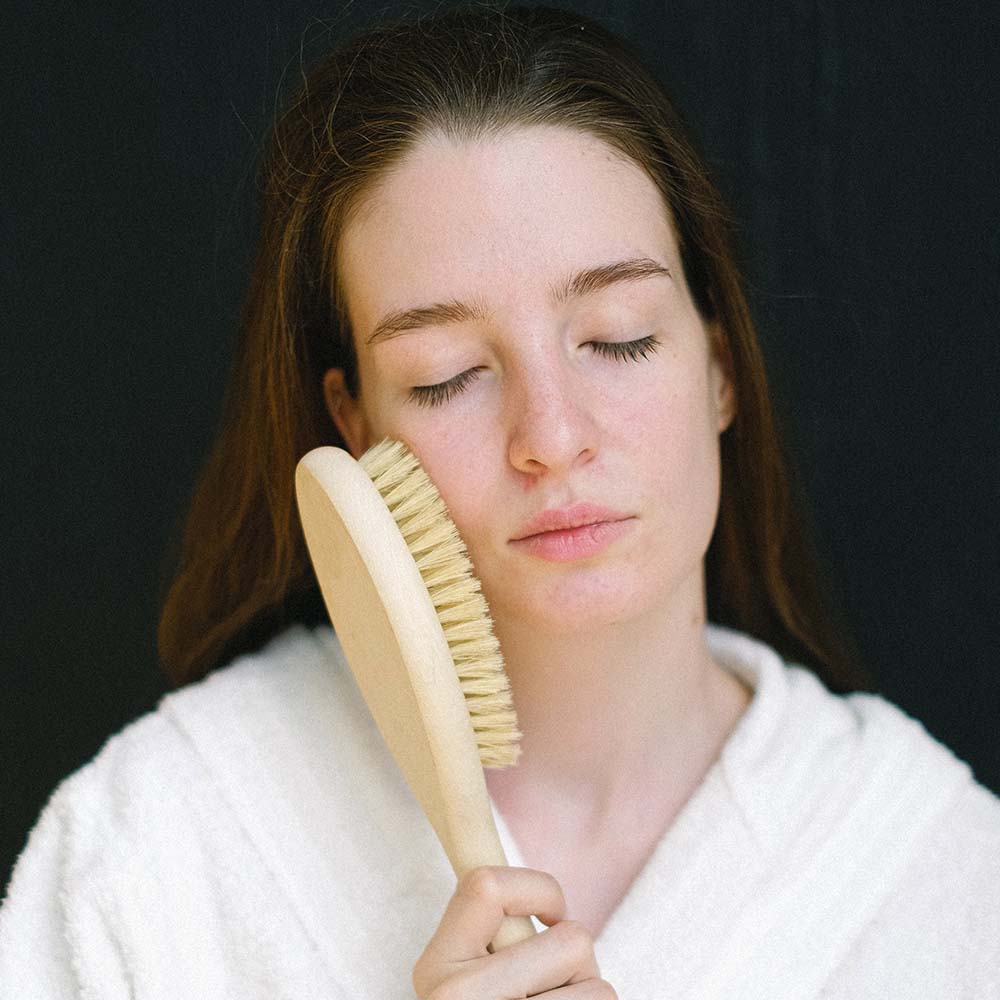
Image source : PMUhub
If you’re on a mission to unlock that coveted glow and achieve a healthier, more vibrant complexion – we’ve got a treat for you. Get ready to explore the wonderful world of facial dry brushing, a trend that’s taking the skincare world by storm.
You might be familiar with body dry brushing, but did you know it works wonders for your face, too?
In this guide, we’ll cover everything you need to know, from the incredible benefits and fun techniques to the best ways to achieve great results. We’ll also give you a list of our top brushes to help you make the right choice!
Let’s get started!
What Is Facial Dry Brushing?
Facial dry brushing is a skincare practice that involves using a specialized soft-bristle brush on the dry, clean skin of your face. The goal is to exfoliate, stimulate circulation, and rejuvenate your complexion.
Much like its counterpart for the body, facial dry brushing is designed to remove dead skin cells, promote lymphatic drainage, and increase blood flow.
This gentle, non-invasive technique is believed to help with a variety of skincare concerns, including improving skin texture, reducing puffiness, and enhancing the absorption of skincare products.
In short, facial dry brushing is an easy and chemical-free way to revitalize your skin, leaving you with a radiant and healthy complexion.
Is Dry Brushing Good for Your Face?
Although there is some debate among skincare experts, the practice of using a dry brush for face and neck has a lot of benefits – which we’ll get to later. The concerns some experts have stem from the fact that it’s very easy to do it wrong.
If you want to avoid that, you should use a brush specifically designed for the face with soft bristles to avoid causing micro-tears or irritation. Always brush on clean, dry skin, and be gentle to avoid skin damage.
It’s also important to not overdo it – limit dry brushing to 1-3 times a week to prevent potential skin damage.
If you have sensitive or inflamed skin, acne, or any other skin conditions, consult a dermatologist before trying facial dry brushing to ensure it’s suitable for your skin type.
So, you absolutely can dry brush face and neck, as long as you do it properly and with the right tool.
Where to Find a Dry Brush for the Face?
Since we’re on the topic of finding the best dry brush for the face, we first wanted to reiterate that it’s important not to use a body dry brush, as they are much harsher. Instead, take the time to find one specifically designed to be used on the gentler facial skin.
To help you out with that, we searched through Amazon to find the best brush for dry brushing your face.
Check out our top 3 picks:
The Best Overall: Zen Me Dry Brush for Face
The reason this brush made it to the ‘best overall’ spot is its simplicity – it’s just a soft-bristled brush designed specifically for dry brushing your face.
The bristles are all-natural and made of boar hair, meaning that there’s no risk of microplastics coming in contact with your skin.
Plus, the price is pretty compelling, too!
The Best Soft Brush: EESGN Cleansing Facial Brush
If you’re looking to integrate facial dry brushing into your routine, but regular brushes are just too harsh for your sensitive skin, this super soft-bristled one might be your best option!
Its size is very travel-friendly, and the reviews are overwhelmingly positive, with most reviewers praising how dense and gentle the bristles are.
The Best Set: Belula Premium Dry Brushing Body Brush Set
If you’re looking to integrate facial dry brushing into your routine, but regular brushes are just too harsh for your sensitive skin, this super soft-bristled one might be your best option!
Its size is very travel-friendly, and the reviews are overwhelmingly positive, with most reviewers praising how dense and gentle the bristles are.
The Benefits of Dry Brushing Your Face
Like we already mentioned, there are a lot of benefits of dry face brushing for both your skin and overall well-being. Here’s what they are:
- It helps exfoliation. Dry brushing helps to remove dead skin cells from the surface of your face, leaving your skin smoother and brighter.
- It improves circulation. Brushing your face gently stimulates blood flow, which then leads to a healthier complexion and a natural, rosy glow.
- It helps lymphatic drainage. The brushing motion may support lymphatic drainage, reducing puffiness and promoting a more sculpted appearance.
- It enhances product absorption. By eliminating the outer layer of dead skin cells, dry brushing improves the absorption of skincare products, making them more effective.
- There’s potential for acne management. Regular dry brushing helps to unclog pores and prevent acne breakouts, but it’s best to consult with your dermatologist first since not everyone’s skin or skin issues are the same.
- It’s natural and eco-friendly. Dry brushing is a chemical-free and eco-friendly way to maintain your skin’s health and appearance.
- It’s relaxing. The ritual of gently brushing your face is a calming, meditative addition to your routine – and who doesn’t need that?
What’s a Good Dry Brush Face Technique?
There is a wide array of facial dry brushing techniques made for different skincare needs and preferences. While the basic circular motion (scroll down for instructions) is a popular choice for gentle exfoliation, some prefer a more specialized approach.
For example, the feathering technique involves using feather-light strokes to minimize any potential irritation.
The lymphatic drainage method emphasizes light, downward strokes to reduce puffiness and promote fluid circulation, while pressure point dry brushing targets specific facial pressure points for relaxation and rejuvenation.
As you can see, it all depends on what you want to achieve. But dry brushing, in general, is supposed to be a gentle and relaxing step in your routine, so just do what feels best for you!
How to Use a Facial Dry Brush
As promised, we’re going to teach you how to get the most out of your facial dry brushing experience! This here is the most popular way to dry brush the face for exfoliation, but feel free to customize it based on your specific goals.
Here’s a step-by-step guide:
Prepare your skin. Start with a clean, makeup-free, and dry face. You can dry brush in the morning or evening, whichever suits your routine.
- Begin with a clean brush. Before each use, make sure your brush is clean. You can wash it with mild soap and water and allow it to dry completely.
- Hold the brush gently but firmly in your hand, and use a light pressure. The key is to be gentle to avoid skin irritation.
- Start at the center of your face and move outward in a gentle, upward, and circular motion. Use small, clockwise circles.
- Brush each area of your face for about 10-15 seconds before moving to the next. Go over your forehead, cheeks, nose, and chin. Be extra careful around sensitive areas like the lips and under the eyes, and skip your eyelids.
- After dry brushing, apply your regular skincare products, since the exfoliation from dry brushing can enhance their absorption.
- Clean your brush again after each use to remove any dead skin cells and maintain hygiene.
NOTE
After dry brushing, you may notice some light redness due to increased blood circulation. This is normal and should go away quickly. If you experience excessive redness or discomfort, stop dry brushing and consult a dermatologist.
How to Do Dry Brushing Face for Wrinkles
If your aim with dry brushing is to reduce the appearance of your fine lines and wrinkles, there are a few differences from dry brushing just for exfoliation.
When it comes to your technique, you’ll want to do upward and outward strokes in the direction of wrinkle lines, helping to tighten and firm the skin.
It’s also important to note that dry brushing for wrinkles is typically done less frequently than exfoliation, usually 1-2 times a week.
With consistency, dry brushing will help with increasing blood flow, which can support skin firmness and elasticity, potentially reducing the visibility of fine lines and wrinkles over time.
Can I Do Dry Brushing Face with a Toothbrush?
As strange as it may sound – yes – you can use a toothbrush for dry brushing your face!
The only thing to keep in mind is that you can’t use a brush with harsh bristles since that would only irritate your skin.
Some experts also say that natural bristles are crucial for dry brushing, but that is still up for debate, so don’t let it deter you from trying this unconventional method!
How Long Should I Dry Brush Your Face?
During a dry brushing session, it’s recommended to brush each area of your face for approximately 10-15 seconds before moving to the next section.
The key is to maintain gentle and consistent pressure and to make sure you cover all areas of your face.
Of course, if you start to notice a stinging from the brush, you should move on to the next section even before your designated time is up.
How Often Should I Dry Brush My Face?
The short answer is a couple of times a week.
However, the long answer is that this depends on your skin type.
For example, if you have normal skin and are looking to just maintain a healthy complexion, dry brushing your face 1-3 times a week will be more than enough.
This frequency can help with exfoliation and promote circulation without overstimulating the skin.
If you have sensitive or easily irritated skin, it’s best to limit dry brushing to once a week and to be extra gentle with the strokes to prevent any concerning reactions.
If you have acne-prone skin, consult a dermatologist before incorporating dry brushing into your routine. They can provide guidance on how often you should do it, if at all.
Finally, if you have mature skin and your goal is to address wrinkles or fine lines, you can dry brush less often – just 1-2 times a week will be enough.
What to Do Instead of Dry Brushing Your Face?
When it comes to skincare, not every technique suits every individual, and some experts advise against dry brushing the face altogether due to concerns about potential irritation or sensitivity.
If your skin doesn’t react well to dry brushing or you prefer to explore other alternatives, there are plenty of other effective methods for achieving healthy and radiant skin.
Firstly, there are other mechanical exfoliators to try.
This can be a simple homemade or store-bought scrub, or a tool designed specifically for this purpose. Depending on your skin’s sensitivity and skincare goals, you can invest in a glove, sponge, or pad of varying levels of gentleness.
But if you prefer a chemical peel, this 2% BHA + Salicylic acid combo is a great exfoliant known for its ability to penetrate the pores and dissolve excess oil.
By promoting gentle exfoliation and reducing clogged pores, it can help to improve skin texture, minimize blemishes, and leave the skin feeling smoother and looking more radiant.
Facial Dry Brushing – Main Takeaways
To wrap up the story on facial dry brushing, let’s go over some of the key points:
- You need to get a brush that’s specifically designed for facial use,
- There are different techniques to try depending on what you want to achieve,
- Your skin type determines how often you should dry brush your face,
- Facial dry brushing will leave your skin smoother, brighter, and rejuvenated.
So we think it’s worth trying out!
weekly insight into PMU insdustry
Subscribe to our FREE newsletter. 100% good stuff.

support us so we can keep providing you with free education , information and inspiration.

